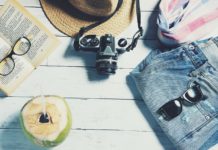A camera may just be another gadget for some but for photographers, it’s their bread and butter. Having a damaged or broken camera, lens, or tripod can set them back from taking in clients or put a dent in their savings in case they need to have them repaired or replaced.
That’s why it’s vital for photographers to maintain their equipment, whether they are veterans with their own gear or apprentices leasing cameras from a DSLR rental. With proper care, they can extend the service life of their DSLR and other photography essentials.
While vintage non-digital cameras can last decades, modern DSLRs—with their complex electrical components, last an average of 5 years—according to some industry estimates. However, when these cameras are properly maintained, they can last longer than you expect.
For tips on how to take good care of your camera and photography gear, we’ve curated a list below:
1. Keep Your Camera and Lenses Clean
Your DSLR body and its lenses are probably the most expensive investment for photographers. As such, it’s logical and financially practical that these tools of the trade are kept in good condition through regular cleaning. Here are a few tips:
Clean the Lens with the Proper Tools. Use a soft lens brush or a blower to remove dust from the lens. To remove fingerprints or smudges, use a special lens cleaning solution and a clean microfibre cloth. Remember to apply the solution to the cloth and not directly on the lens.
Clean the Sensor Carefully. If you’ve noticed that your images have spots or smudges in the areas, it’s likely that your camera’s sensor is dusty and due for a cleaning. However, keep in mind that your camera’s sensors come with sensitive components, so great care is needed when cleaning this part of your DSLR. To remove dust without touching the sensor, you can use a blower or a special camera sensor cleaning kit that includes a soft brush and cleaning solution.
Clean the Camera Body. Wipe the camera body with a soft, dry cloth. You may also use a blower to remove dirt from the nooks and crannies of your camera.
2. Store Equipment Properly
You can prevent many issues with your camera by simply storing it and your other equipment properly. In particular, use a properly cushioned camera case or bag for your gear. Additionally, make sure you are also cleaning your camera bag to get rid of debris that can cling to your newly cleaned gear.
Humidity Control. Store your camera, lenses, tripods, and other gear in a cool, dry place. You can also place packets of silica gel in your camera bags or use a dehumidifier in your storage area to prevent fungal growth, which can damage lens coatings.
Separate Storage. Keep your camera, flashes, lenses, and filters in a padded bag with dividers to avoid scratches and physical damage caused by friction or components bumping into each other. If you’re storing your gear long-term, remove the batteries to avoid leakage.
3. Handle with Care
Proper handling and usage can go a long way in preventing issues with your camera. Basic reminders such as making sure you don’t get your camera wet or drop it always apply. Here are a few more tips:
Moisture/Water Protection. Unlike some adventure cameras that are designed specifically for outdoor use, your DSLR comes with sensitive components that can be damaged when they come into contact with moisture. So, if you’re shooting outdoors as a wildlife, sports, or even wedding photographer, make sure to bring a protective cover for your camera and lens.
Avoid Extreme Temperatures. Extreme temperatures can damage your camera’s battery life and moving parts, so be mindful of where you use and store your photography gear.
Be Cautious with Beaches and Deserts. Sand and salt can be harmful to your photography equipment, particularly lenses and accessories with plenty of moving parts. Specifically, particles of sand can permanently scratch your lenses, while salt can cause corrosion. Therefore, if you’re shooting in these environments, keep your camera in a protective bag when not in use and clean it thoroughly afterwards.
4. Regular Maintenance Checks
Getting your camera serviced regularly can prevent simple issues from escalating into expensive repairs and replacements. In general, DSLRs should be serviced at least once a year. However, if you’ve been using your camera heavily, more frequent maintenance should be scheduled. For simple inspections, you should do the following:
Check Battery Contacts. Clean the contacts occasionally with a dry cloth to ensure they remain efficient. In some cases, alkaline batteries can leak onto the contacts; this can lead to corrosion and further damage, so be conscientious about regular battery checks.
Inspect Seals and Gaskets. No matter how careful you are with your equipment, you will eventually need to replace parts like the seals and gaskets because these degrade over time. So, check the integrity of your camera’s weather sealing to ensure it remains effective against dust and moisture.
5. Use and Swap Lenses Carefully
Photographers who practise good camera habits, such as swapping lenses correctly, can prevent future damage to their expensive equipment. To keep your DSLR and lenses in great condition, heed these best practices:
Protect the Sensor. When replacing camera lenses, prepare the replacement lens before unscrewing the current lens from the camera body. Then, point the camera downward when screwing in the new lens. These actions reduce the chances of dust landing on your camera’s sensor.
Change Lenses in Safe Environments. To further prevent dust from entering the camera, change lenses in a clean, wind-free setting whenever possible. Also, turn off the camera to reduce the static attracting dust.
Cap Your Lenses and Camera. Always cap your lenses and camera body when not in use to protect them from dust and scratches.
Caring for your DSLR and other photography equipment requires a dedicated approach, which focuses on both prevention and routine maintenance. Through these tips, you can safeguard your investment and ensure that it continues to perform at its best.

































